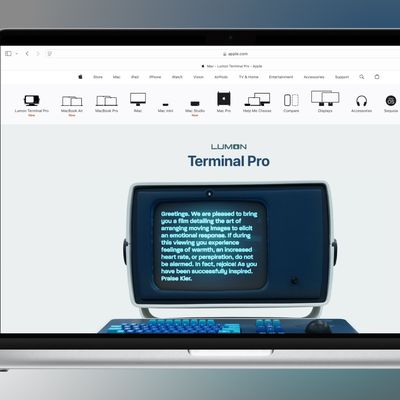Apple yesterday announced macOS Sierra, the latest version of its Mac software platform and renamed successor to OS X El Capitan. The first beta was released to developers following yesterday's keynote, providing early adopters with a closer look at what's new.
Apple File System
Apple File System, or APFS, is a next-generation file system for Apple products based upon the iOS, macOS, tvOS, and watchOS software platforms, ranging from the Apple Watch to a Mac Pro.

APFS, which supports nearly all of the features of HFS+, is optimized for Flash/SSD storage and features strong encryption, copy-on-write metadata, space sharing, cloning for files and directories, snapshots, fast directory sizing, atomic safe-save primitives, and improved file system fundamentals.
Apple has posted an Apple File System Guide on its Developer Portal with technical details and other documentation.
The file system is available in pre-release beta for Apple developers on macOS Sierra and is scheduled to ship in 2017.
RAID Support
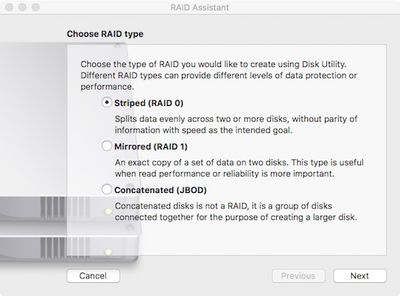
Apple has reintroduced the ability to create and manage RAID volumes in Disk Utility on macOS Sierra, pleasing a number of Mac users who were left disappointed when the functionality disappeared in OS X El Capitan.
"Anywhere" Dropped From Gatekeeper
Apple has removed the Gatekeeper option to allow apps to be downloaded from "anywhere" by default in System Preferences > Security & Privacy, resulting in a warning dialog when you attempt to open an app from an unidentified developer. "Mac App Store" and "Mac App Store and identified developers" remain selectable.
'Anywhere' option missing? Does OS X 10.12 fully disallow unsigned apps? #Gatekeeper #Sierra pic.twitter.com/yBfrhllaJA — patrick wardle (@patrickwardle) June 14, 2016
Default Text Size in Notes
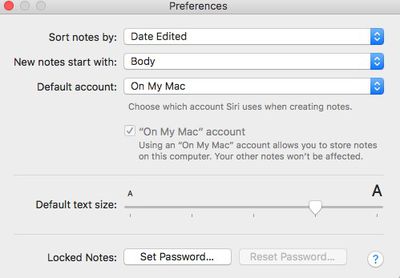
Optimized Storage
macOS Sierra has a new optimized storage function that frees disk space on your Mac by automatically storing rarely used files in the cloud and keeping them available on demand. It can also help you find and remove old files you no longer use.
During its WWDC 2016 keynote, Apple briefly showed slides that indicate which types of files are stored or deleted.
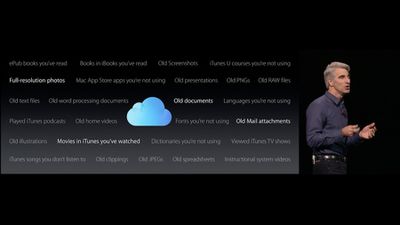
Old files that are backed up to iCloud include ePub books you've read, books in iBooks you've read, old screenshots, iTunes U courses you're not using, full-resolution photos, Mac App Store apps you're not using, old presentations, old PNGs and JPEGs, old RAW files, old text files, old word processing documents, old documents, languages you're not using, played iTunes podcasts, old home videos, fonts you're not using, old Mail attachments, old illustrations, movies in iTunes you've watched, dictionaries you're not using, viewed iTunes TV shows, iTunes songs you don't listen to, old clippings, old spreadsheets, and instructional system videos.
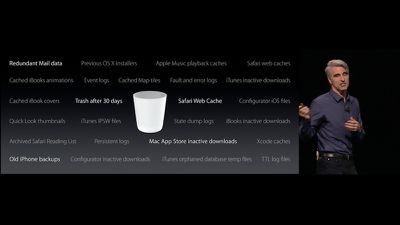
Old files that can be found and removed include redundant Mail data, previous OS X installers, Apple Music playback caches, Safari web caches, cached iBooks animations, event logs, cached Map tiles, fault and error logs, iTunes inactive downloads, cached iBooks covers, trash after 30 days, Safari Web Cache, Configurator iOS files, Quick Look thumbnails, iTunes IPSW files, state dump logs, iBooks inactive downloads, archived Safari Reading List, persistent logs, Mac App Store inactive downloads, Xcode caches, old iPhone backups, Configurator inactive downloads, iTunes orphaned database temporary files, and TTL log files.
Siri Preferences
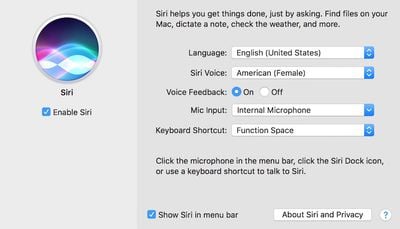
Share your own tidbits in our macOS Sierra: All The Little Things discussion thread.








